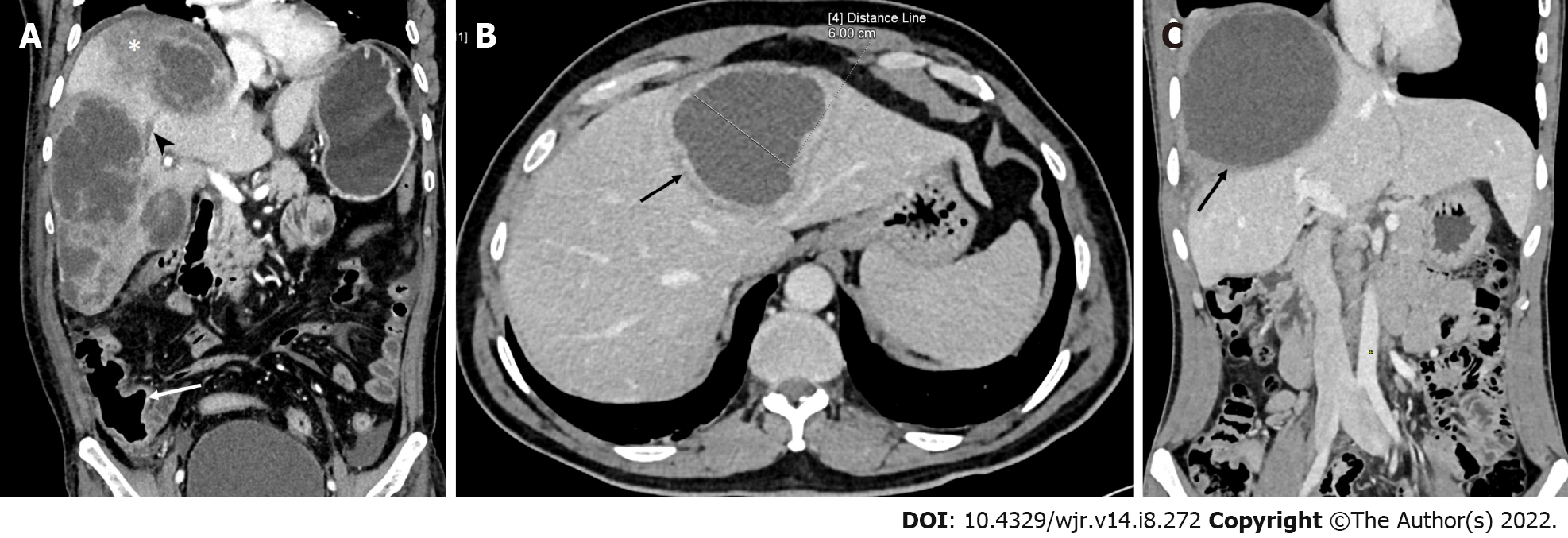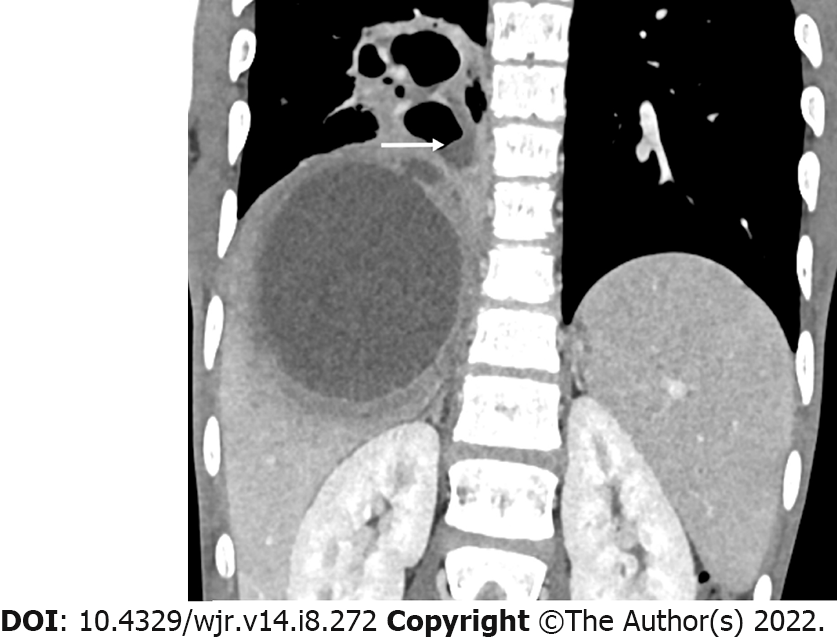Copyright
©The Author(s) 2022.
World J Radiol. Aug 28, 2022; 14(8): 272-285
Published online Aug 28, 2022. doi: 10.4329/wjr.v14.i8.272
Published online Aug 28, 2022. doi: 10.4329/wjr.v14.i8.272
Figure 1 Computed tomography images.
A: Computed tomography (CT) (coronal image) demonstrating the characteristic imaging findings of an acute aggressive abscess (type I pattern) in a 60-year-old man who presented with sepsis-like features and markedly deranged laboratory parameters. There are multiple abscesses in the right lobe with irregular ragged edges, multiple septa and heterogeneous densities indicating partially liquefied tissue. Also, note the presence of a hypodense area in the surrounding parenchyma (asterisk) and right hepatic vein thrombosis (arrowhead). The thickened cecal wall (arrow) and mild ascites are also evident; B: CT of a typical case of subacute mild disease. The laboratory profile was near normal. The axial image shows an abscess in the left lobe with a well-defined wall showing rim enhancement (type II pattern). This patient presented with mild abdominal pain after 20 d of symptoms; C: CT image of a chronic indolent abscess (type III pattern). Coronal image of a 24-year-old man showing a large abscess with a thick non-enhancing wall in the right lobe. He had persistent pain in the right upper quadrant for two months despite complete resolution of fever and normalization of laboratory tests after metronidazole therapy.
Figure 2 Computed tomography image (coronal view) of a patient who presented with productive cough and mild upper abdominal pain for more than four weeks.
Note the rupture of a subdiaphragmatic abscess into the lung resulting in the formation of a lung abscess. The air-fluid level in the lung abscess (arrow) indicates fistulous communication between the lung abscess and the bronchus.
Figure 3 Computed tomography image.
A: Computed tomography image (coronal view) demonstrating a contained rupture. A fluid collection that is localized in the subphrenic space (asterisk). Note the wide rent in the abscess (arrow). Additional imaging features of an aggressive disease in this image are the presence of ascites and thrombus in a segment of the hepatic vein (arrowhead); B: Free intraperitoneal rupture in a 40-year-old man who presented with features of generalized peritonitis. Coronal computed tomography image showing a large amebic abscess with an irregular edge in the right lobe and diffuse intraperitoneal fluid collection (arrows).
Figure 4 Axial computed tomography of a 60-year-old man showing a large abscess in segment IV of the liver near the porta hepatis.
Note the duct dilation (arrows) that resulted from rupture of the abscess into the central bile ducts. He was managed with catheter drainage. Bilious fluid draining through the catheter was observed for several weeks in this patient.
- Citation: Priyadarshi RN, Kumar R, Anand U. Amebic liver abscess: Clinico-radiological findings and interventional management. World J Radiol 2022; 14(8): 272-285
- URL: https://www.wjgnet.com/1949-8470/full/v14/i8/272.htm
- DOI: https://dx.doi.org/10.4329/wjr.v14.i8.272












